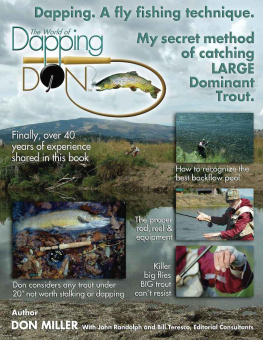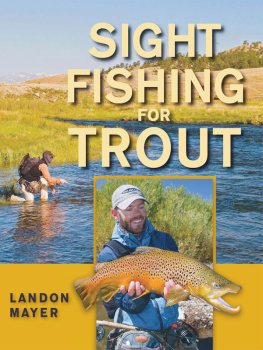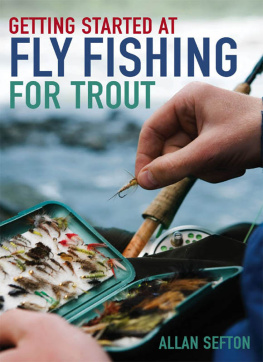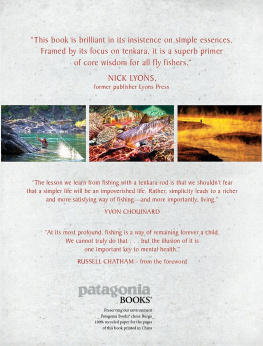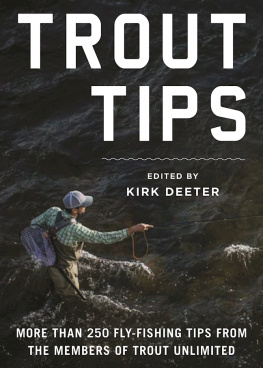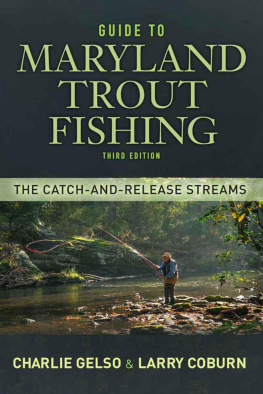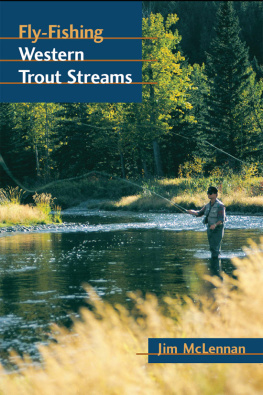John Randolph -whose friendship and unselfish guidance through many hours of reading and re-reading made this book a reality. Thank You
Bill Teresco -whose patience, understanding and knowledge in computers and fly fishing made this project possible. Without your expertise and unselfish help this book would never have been published. Thanks
Duane E. Kilmer -thanks for the illustrations throughout this project. Incredible job!
Dennis L. Miller -my little younger brother whose advertising skills, videography, photography, scripts and much more make this project possible. Thanks ( , Houston, TX, Advertising Agency)
The following people are listed in alphabetical order and each had a profound impact on my fly fishing life.
George Anderson -for allowing me to videotape his unique skills for catching trout on spring creeks. Undoubtedly, George is, in my opinion, one of the best, if not the best, all around fly fisherman.
Chuch Eberly -for sharing his skills about the educated rainbows on the Henrys Fork.
Renee and Bonnie Harrop -your love for fly fishing, respect for trout and the environment, and your honesty makes you both very special people. Rene, your unique skills have impressed me.
Bob Jacklin -his generosity and fly fishing skills have certainly impressed and inspired me.
Gary LaFontaine -Gary was taken away from the fly fishing world much too soon. My conversations with him showed his love of trout plus his never ending pursuit of finding the secrets for how trout eat and live. Gary was a big inspiration to me. Miss you Gary as Im sure the fly fishing world does.
Mike and Sheralee Lawson -for helping me over the course of thirty years give good used equipment to boys and girls clubs in Nevada. I also appreciate your honest and thoughtful contributions to fly fishing. Thank You!
Bing Lemke -Bing is gone now but, in my minds eye, I still see him fly fishing the Last Chance area in Island Park, ID, across the street from Mike Lawsons Henrys Fork Anglers in the late seventies and early eighties. Bing had a quick, casting movement plus that unique automatic reel (it worked for him). Bing was a great fly fisherman but most of all a great person! Thanks for the memories, Bing!
Rick Parry -for his true friendship and sharing his expertise on fly fishing.
Steve Rajeff -After many letters written to you describing my dapping techniques, you sent me the perfect IMX Loomis blanks for my long rods. You will never know how I appreciate your ability to make the exact light-weight noodle blanks that I needed. Your rod blanks certainly improved the most important part of my type of dapping next to finding the large trout. Thanks
Denny Rickards -Your thoughts on large trout and their feeding habits in shallow water confirmed my years of studying. Talking with you, whom I consider the expert on large trout, you affirmed that large trout feed in shallow water in lakes or rivers when they can because so much food is available. My brother in Christ, thanks.
Jesus Christ - last but not least, for giving me the patience, skills, determination, health and opportunity to pursue large trout.
FOREWORD
Dapping Dons Way
Its an ancient (false) assumption in fly fishing that our sport got its start in the 15 th century when English Prioress Dame Juliana Burners, formerly believed to be the author of The Treatyse of Fysshynge Wyth an Angle (1496), described using a long three-piece wood rod, a horsehair line (with no reel) and dapping a hand-tied fly (feathers on a crude angle) on the water to bring up trout to eat her imitation insect. There have been centuries of before-and-after adaptions to this technique, including the improvement in rod, hook, and line technologies, in using the wind to draft the fly in skittering and waking paths across the flowing-water surface, and in countless fly modifications from large dropper dries used as waking attractors to the fish and trailing wets used as taking patterns (the trout take the top or bottom fly). Fishing before the wind on lakes to this day is a favored fishing technique on the lochs of Ireland, Scotland, and England.
The dapping technique, simply touching a dry fly to the water and allowing it to float drag free--by dropping the rod tip downstream--to a waiting trout, remained essentially the same throughout the centuries. Fly fishing started, in the pre-modern era, with long two-handed rods, evolving from wood into bamboo. As rods got shorter and lighter, new generations of one-handed fly fishers (traditional Atlantic-salmon fishers, fishing large rivers, stuck with the two-handed rods) occasionally used dapping techniques, and some recently began to fish again with long two-handed rods, primarily fishing wets and dries downstream for salmon and steelhead. However, dapping has been a seldom used skill in the modern era.
The recent advent in Japan (and the U.S.) of the long Tenkara rods and fishing techniques is a new angle on the old dapping technique. It involves using a line affixed to the rod tip, without the use of a reel at the butt. It is used for relatively small freshwater fish because without a reel a large fish cannot be effectively played to net.

